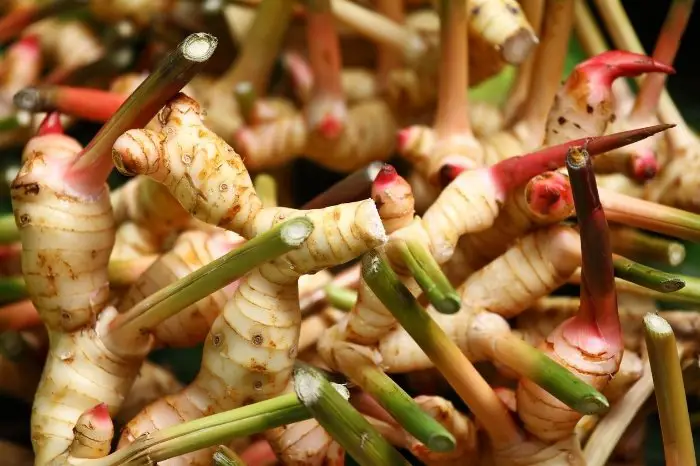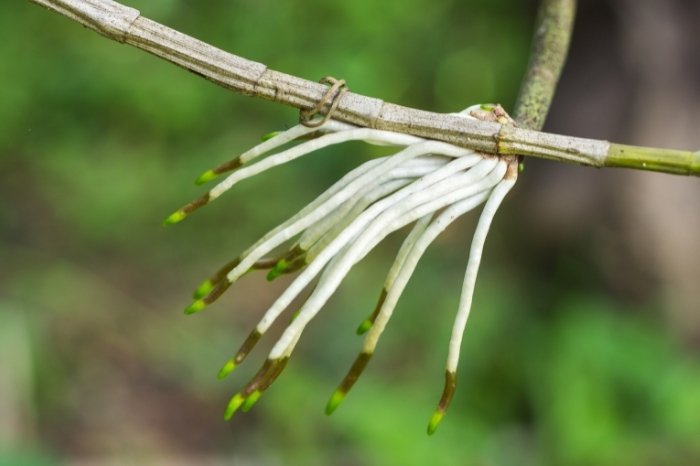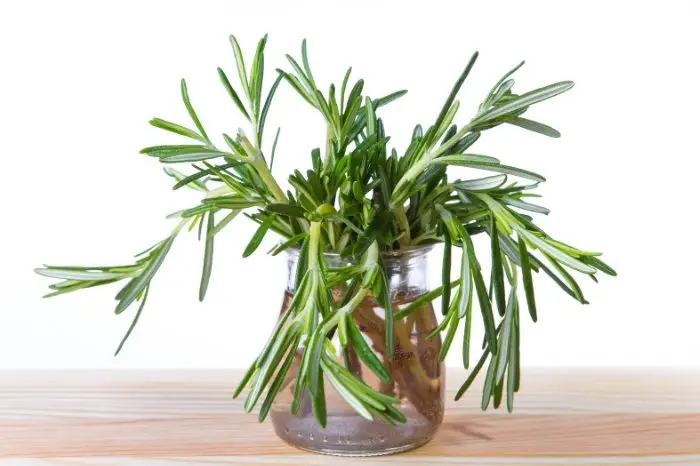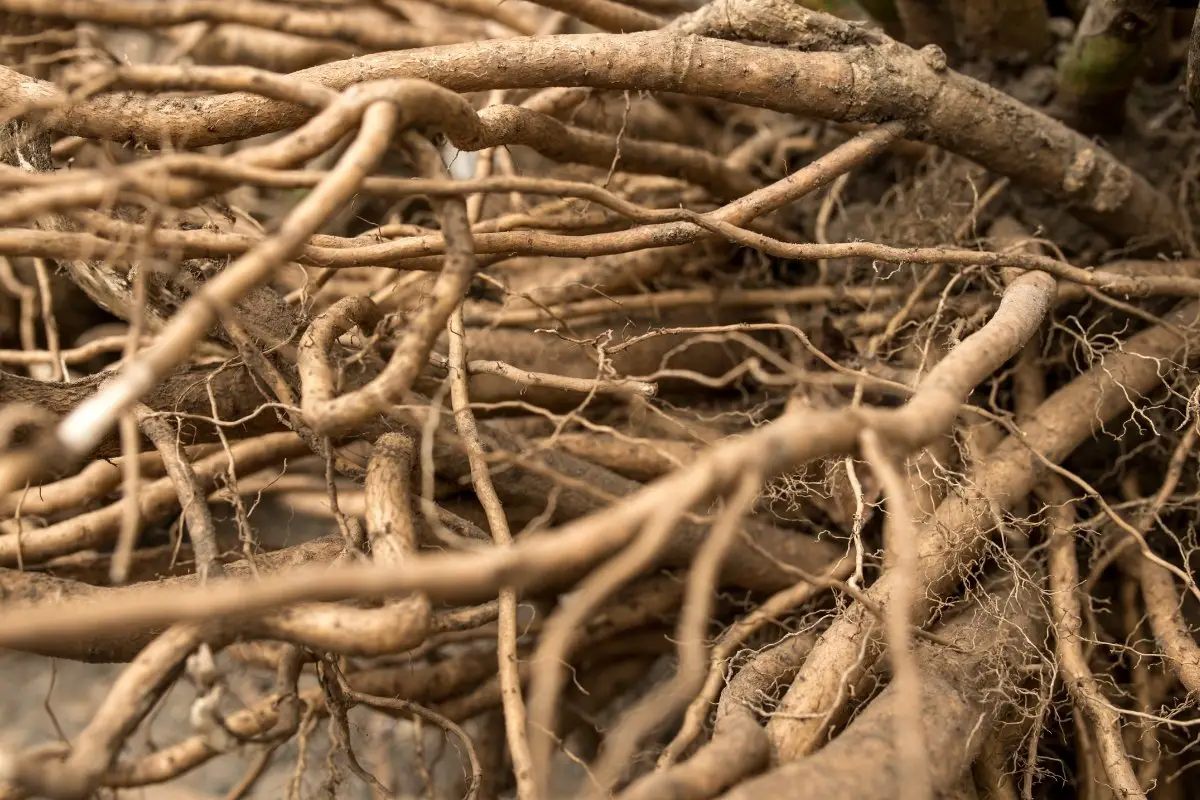Last Updated on April 1, 2022 by Griselda M.
The fibrous root system is first to develop, anchoring the plants, providing food, and preventing erosion. But did you know that the fibrous root can also be edible in some plants?
The fibrous root is a network of small thin roots extending not deep into the soil, mainly close to the surface. In older trees, you can notice the web of roots above the surface. If you ever pulled grass from your garden, you’ve noticed intertwined delicate roots resembling unruly hair.
Let’s see what advantages the plants with the fibrous root system enjoy.
What Is A Fibrous Root
So you wonder how can you identify a fibrous root system? You don’t need to be an expert biologist as the differences are visible with a naked eye.
Plants can be angiosperms, growing their own reproductive seeds and fruit, or gymnosperm, with naked seed. As the seed germinates, it lets out an anchor into the soil called radicle and a sprout above the ground. The number of sprouts indicates the type of root this plant will develop.
Scientifically, the sprout is called cotyledon. Plants with a single sprout or cotyledon are called monocotyledons and create a fibrous root.
If you ever wondered which type of angiosperm typically has parallel leaf veins and a fibrous root system; the answer is monocotyledons.
Fibrous roots develop from the radicle and expand horizontally near the soil’s surface. The maximum dept they can reach in a lifetime ranges from 15 to 20 inches. Each root is 1-3mm big, so when you look at the whole system, there’s no distinct difference between parts.
Types Of Fibrous Roots
So, what is a fibrous root system? A set of shallow thin roots that provide the plant with the necessary hydration and minerals and bring some benefits to the soil. But you might not know that there are a couple of different fibrous roots. Some are very similar to the tap root system, which can confuse you. Here’s how to recognize them.
Fleshy Fibrous Roots
This form of fibrous roots is closest to the taproot system. The plants with fleshy fibrous roots have developed storage roots that hold moisture and food. They’re bigger than the regular fibrous roots and divided into 3 groups: tuberous, annulated, and fasciculated roots.
A perfect example is the ginger plant. It has a fleshy fibrous root system with more expansive, nutritious, watery, and edible roots.

Reproductive Roots
The reproductive fibrous roots are pretty similar to the fleshy ones. But the reproductive roots have one more perk. They can form buds that result in the growth of a new plant.
Take the sweet potatoes, for example. They have fleshy fibrous roots. Those roots develop buds or sprouts that can evolve into a new plant.
Stilt Roots
Stilt roots are a unique form of the fibrous root system that grows part of its network above the soil. They’re short, thick roots that grow from the base of the stem. But they don’t dive directly into the ground; instead, they spread horizontally and then dip into the soil.
The roots resemble guy ropes securing a tent, concentric circles, or spirals. Common plants with stilt fibrous roots are maize and sugar cane.
Fibrous Roots Problems
The fibrous roots system is not as resistant as the taproot system. As a result, plants with taproots took over in many habitats with harsher growing conditions like drought.
Another concern regarding the fibrous roots is their tendency to get root bound. When grown in pots, plants with fibrous roots can quickly run out of space, leading to insufficient food and the death of the plant.
Mycorrhizal Fungi Root Enhancer for Plants
Benefits Of Fibrous Root Plants
Erosion Control
Plants with fibrous root systems are considered very beneficial when planted in places prone to erosion. This is because their roots grow horizontally, supporting the top layer of the soil from disintegrating.
Increase Porosity
The numerous thin roots of the fibrous roots system penetrate the top layer of the soil increasing its porosity. The roots make space for more air and water to increase any dense soil, like clay.
Easily Decomposed
The fibrous roots enrich the soil. In addition, the dead roots are easily accessible since they grow close to the surface. Microorganisms and bacteria can reach them in no time and decompose them fast, improving the soil’s quality.
Plants With Fibrous Root System
The fibrous root system might seem too fragile to support bigger, top-heavy plants. Conversely, you’d be surprised to know that many trees like walnut, pecan, and oak have fibrous roots. But, which plant typically has parallel leaf veins and a fibrous root system? Lilies, orchids, and grasses.

Here are some other plants with fibrous roots.
Sweet Potatoes
Sweet potatoes grow edible, fleshy fibrous roots that can also be used as reproductive roots. A single plant can grow 5 to 10 swollen fleshy roots that you can harvest. If you leave a sweet potato on your kitchen counter for a while, it’s likely to grow sprouts.
Click Here to Learn About:
Coconut
Coconut has numerous fibrous roots growing horizontally and vertically to support the large trunk. They’re not massive in size but grow in a significant number. The coconut roots grow from the stem, so you can notice the top part above the soil.
Rosemary
Rosemary is the typical example of a fibrous root system. It has thin intertwined fibrous roots. Therefore, it’s very likely to get root bound if grown in a container.

Final Say: Perks Of The Fibrous Root System
A fibrous root system is a wide network of tiny roots expanding horizontally rather than vertically into the soil. Unlike the taproot system, there’s not one primary root but numerous roots of similar size.
Fibrous roots can sometimes be fleshy, resembling tap roots. However, they’re not as hardy and can’t withstand harsher growing conditions. You can find fibrous roots in coconut, walnut, oak trees, and numerous flowers like lilies and orchids.
FAQ’s
How can you identify a fibrous root system?
A fibrous root system is easy to identify; dig out the plant and look at the roots. If there are numerous short roots, similar in size and in a web-like formation, that's fibrous root system.
What is a fibrous root system?
The fibrous root system is made out of several thin roots growing from the plant's stem, expanding horizontally. The taproot is its opposite; it has one sizeable primary root and delicate secondary and tertiary roots
Which type of angiosperm typically has parallel leaf veins and a fibrous root system?
Monocotyledons or the plants with a singular cotyledon have a fibrous root system and parallel leaf veins.
Which plant typically has parallel leaf veins and a fibrous root system?
Monocots have parallel leaf veins since they have one cotyledon. Some examples are rosemary, asparagus, lilies, sweet potatoes, and maze.
Mary is a passionate gardener who loves spending her days getting her hands dirty and nurturing her plants. She‘s an avid reader of gardening magazines and is always looking for new ways to make her garden thrive. When not outside tending to her plants, Mary can be found inside reading up on the latest gardening trends, comparing notes with fellow gardeners, and finding the perfect pottery planter for her next planting project.



